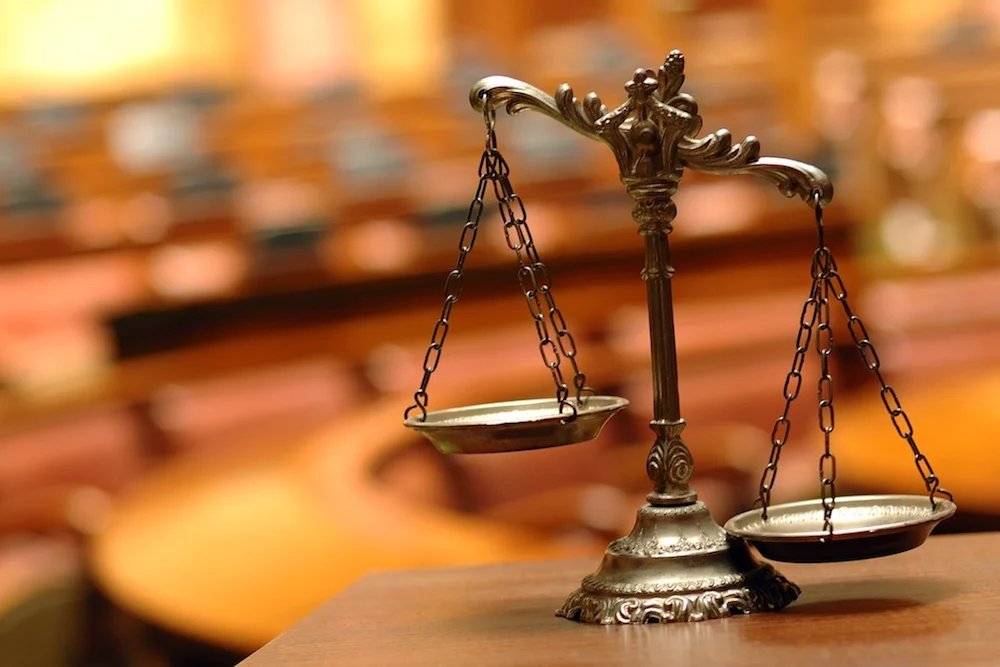PHILADELPHIA – Adjacent property owners in Center City, Philadelphia are in legal conflict over the existence and placement of scaffolding and sidewalk shelters, with each side opposed as to the structures’ legality or lack thereof.
Felchen 15, L.P. of Philadelphia filed suit in the Philadelphia County Court of Common Pleas on June 28 versus Leroy Kean (doing business as “1415 Locust Associates”).
“Plaintiff is the owner of the building located at 1417 Locust Street, Philadelphia, Pennsylvania 19102. Defendant is the owner of the property located at 1415 Locust Street, that adjoins the east side of plaintiff’s property on Locust Street,” the suit states.
“On Feb. 25, 2015, the City of Philadelphia Department of Licenses and Inspections initiated Code Enforcement Case No. 469596 against defendant’s property citing unsafe conditions and issued three violation notices, each of which cited violations of various portions of the Philadelphia Code…pertaining to unsafe conditions and citing 'Wall Bulged' and 'Fractured Wall' violations.”
As of April 4, 2018, the status of violation notices first issued in 2015 remain marked “Open” and the current condition of defendant’s property remains described as “Unsafe," the suit says.
“Between March 26, 2015 and Oct. 11, 2017, defendant obtained from the Philadelphia Department of Licenses and Inspections three permits that allowed the erection of temporary sidewalk shelters in front of defendant’s property. The sidewalk shelter permits were issued to enable defendant to make the repairs to facade of defendant’s property to make the facade permanently safe for the public,” the suit says.
“As of this date, defendant has not entered into any contract to permanently remedy the unsafe condition of the exterior walls of defendant’s property. All the sidewalk shelter permits issued to defendant are now invalid as more than six months have elapsed since the issuance of the sidewalk shelter permits and no work has been performed on the facade defendant’s property. While installing the sidewalk shelters, defendant’s agents trespassed on plaintiff’s property and extended the sidewalk shelter scaffolding onto and over plaintiff’s property.”
The suit explains that the sidewalk shelters block access to the plaintiff’s property from the eastern side of Locust Street, and force all persons to walk under the dark shelter where the building above has been determined to be “Unsafe” by the Department of Licenses and Inspections of the City of Philadelphia.
The plaintiff claims these scaffoldings and sidewalk shelters trespassed and encroached on his property and diminished both its leasing and rental values, in addition to the defendant having deliberately created an “actual and immediate threat of future damage to plaintiff’s property, and none of the conditions are within plaintiff’s ability to remedy or control absent injunctive relief.”
In preliminary objections filed on Aug. 1, the defendant said the scaffolding does not extend in front of most of the plaintiff’s property, open and accessible to Locust Street and there for the purpose of complying with public safety issues cited by the City of Philadelphia.
“Notably, in an effort to fabricate claims where none exist, plaintiff’s allegations mischaracterize the content and scope of the permits, documents that speak for themselves. The permits, on their face, state that the work authorized thereunder is completed. The scaffolding is properly on the public sidewalk pursuant to the permits issued by the City, and defendant has no duty to remove it,” according to the objections.
“Moreover, plaintiff has not alleged any cognizable legal injury relating to the presence of the scaffolding on the public sidewalk. First, plaintiff admits in its complaint that the scaffolding does not impede access to the 1417 property or adjacent sidewalk. Indeed, plaintiff admits that its tenants and business invitees can ‘walk under the scaffolding to enter plaintiff’s property.’ Second, as to plaintiff’s allegation that the scaffolding ‘diminishes the leasing value of plaintiff’s property and lowers the rental rate plaintiff’s property can obtain…even if plaintiff could prove such fact, it would does not constitute a legal injury that gives rise to any cause of action in tort.”
Through an answer to the objections filed Aug. 20, the plaintiff denied the defendant’s assertions in these regards.
For counts of injunctive relief, trespass and negligence, the plaintiff is seeking damages in excess of $50,000, a preliminary and permanent injunction requiring defendant to remove his scaffolding, sidewalk shelter and cable/netting systems from plaintiff’s property and to remediate the unsafe condition of defendant’s property and for any such further relief that this Court deems equitable and appropriate.
The plaintiff is represented by Judith E. Fellheimer of Fellheimer & Eichen, in Philadelphia.
The defendant is represented by Amanda J. Dougherty and Rona J. Rosen of Klehr Harrison Harvey Branzburg, also in Philadelphia.
Philadelphia County Court of Common Pleas case 180603632
From the Pennsylvania Record: Reach Courts Reporter Nicholas Malfitano at nickpennrecord@gmail.com
